There are twenty-six letters of the English alphabet. When five of those letters (a, e, i, o, and u) are said breath flows freely through the speaker's mouth. These letters are referred to as vowels. The remaining twenty-one letters are referred to as consonants. In the series of worksheets below we will explore the sounds, sound chunks, and words created by the various different consonants. To go along with this, you also want to explore our consonant blending section as they can help you start to see the connection between the letters and the words that become responsible for.
Consonant Worksheet Categories
Click the buttons to be transported to all the worksheets for that topic.
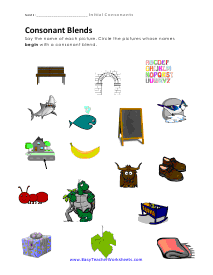
Initial Consonants
These are the letters that are found at the beginning of the words that they are located in.
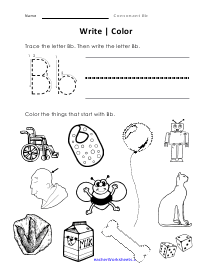
Letter b Worksheets
We help you get familiar with sounds and words created by this great letter that helps us form words like: bed, bus, boo, and buy
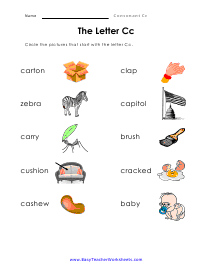
Letter C
Identify where this letter hides in a series of objects and learn to compose words with Cc.

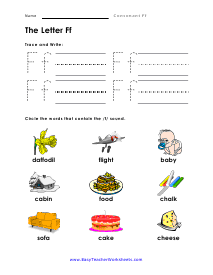

The Giant Letter G
This letter is found at the front of government, middle of figure, and end of egg.
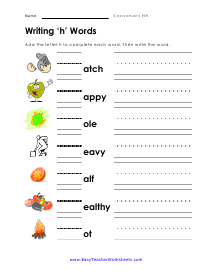
Letter h - This Makes Us Happy.
The sound pronounced when saying this letter is made with movement through the vocal cords, but not voiced.

Letter j - The jumbly consonant.
Present in many of my most favorite words such as: jump, jolly, and ajar. I cannot not explain why ajar is a favorite word of mine. Just look at it, isn't it cool?

Letter k - The Kickoff letter
Often confused with his cousin the letter c. This is due to how it sounds when you say it aloud.
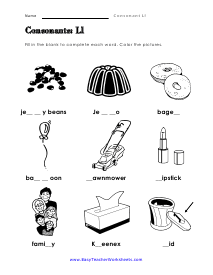
Letter l - Practice Pages
You could not have an entire albulm filled with lullaby lyrics without it.

Letter m - The Mountainous Consonant
Yes, there are a mountain of words that start with this. It accounts for a large chunk of real estate in any dictionary or thesaurus.


Letter q - Practice pages
In vocabulary games there are two hundred and ninety-four playable words that start with this letter.
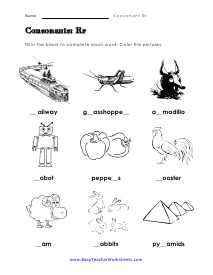
Letter r Worksheets
I always forget how to spell aardvark because I forget this letter. In fact, I had to look it up to write the previous sentence.
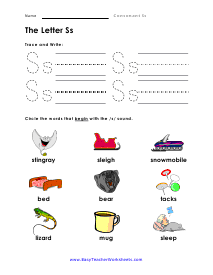


Letter v Exercises
This letter really makes your vocal cords jump and vibrate a great deal. This is the letter of the English language that is never silent.

Letter w - Which makes us go Wow!
You have to round your lips to pronounce the words it produces. This was formed by meshing a double-u symbol. It finally stuck.

Letter x - The misunderstood letter
This is an often forgotten, but very unique letter. The Phoenicians formed x in their alphabet.
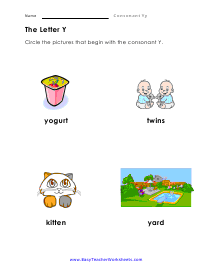
Letter y - Am I a vowel or not?
Because of the sounds it can produce this consonant has a be of an identity crisis. It was derived from the Latin alphabet.

Letter z - The Final Consonant in The Game
You would be surprised to know that just under eleven-thousand words of the English language contain this consonant. This is found at the very end of the English alphabet.
What Makes a Letter a Vowel or Consonant?
Everyone knows what a vowel is...
It is "a", "e", "i", "o", "u" and sometimes "y" and "w."
By that logic, a consonant is anything that is NOT those letters.
Isn't that a weird way to remember the lot?
To make it simpler, a vowel is a continuous sound that is not broken by the flick of a tongue or the closing of the lips, or even the break of the vocal cords. The opposite is true for a consonant.
So why make an exception for "y" and "w?"
Well, that is because in the case of the letter "y," the sound depends on the word it is being used within. The "y" in "fly" is pronounced completely different from the "y" in "myth." Similarly, the pronunciation of the "w" in "ow" is different than in "water."
What Makes a Vowel a Vowel?
There are many simple rules that would make a vowel a vowel.
1. It Is Not a Letter; It Is Always a Sound
A vowel is easily described as a sound. Try comparing the "a" in "ant" and the "a" in "earth." See the difference? A vowel has a unique sound assigned to it, and the moment that sound changes, the letter turns into a consonant. The reason "y" and "w" sometimes become vowels stems from the same logic.
2. They Are Sung
If you cannot feel a vowel, it most likely is not a vowel.
Confused? Let us explain.
Every time you are confused between vowels and consonants, try to feel for the vibrations that are produced when vowels are pronounced.
3. Their Sounds are Continuous
You cannot have a break in the pronunciation of your vowel sound.
The moment a break is introduced, and the lips meet, or the vocal cords break, it becomes a consonant.
What Makes a Consonant a Consonant?
Defining consonants can become slightly tricky.
1. They Are Usually Created Through Breaks
A consonant is created when there is some form of break that is connected with the vocal cord. For example, "t," "g," "f," and "z" all require the vocal space to close or narrow for them to pass through.
2. There Is Usually Some Form of Strain Involved
Vowels are effortless; you do not need to use a lot of body parts to make them happen.
Consonants need a particular level of strain. For a consonant to be formed, you need to either make your teeth meet your tongue flick or your vocal cords strain. When saying consonants, we must obstruct our breathing pattern through our vocal tracts. When consonants and vowels are combined, they form units of sound called syllables. Vowels do not always need to be present to form words, but they surely are helpful. The longest word that is composed of only consonants is rhythms. The mechanics of say a consonant and vowel are completely different. When saying consonants you must completely close your vocal tract. The opposite is true when you are saying a vowel aloud. In the English alphabet there are 21 letters that represent consonants that produce 24 different consonant sounds. Consonants produce a great deal of friction to be said aloud. We are taught early on that y can act as a vowel under certain conditions. What is meant by that is that in the right light y can give off a speech sound just like a vowel and as result act just like a vowel. The letter "Y" is often a big old question mark when classifying it as a consonant or vowel. In the word "happy", the letter "y" acts as a vowel.
Why Are These Classifications Important?
This is because the correct usage of "an" and "a" originates here.
All you need to keep in mind is the fact that vowels are defined through their sound. Do not go by the rule of "a," "e," "i," "o," or "u" having to exist for "an" to be used. Instead of looking for the vowel, try to hear it.
"An" may be used behind "apple," but it may also be used behind "honest." See how that happens?
Final Thoughts
You need to tread lightly whenever vowels or consonants are introduced to the mix. The phonetics cheat is an easy way to recognize vowels, but sometimes that may fail.
Practice makes perfect. Reading can lead to a comprehensive vocabulary which would introduce more words to your mental dictionary. It would also introduce to you the many different ways writers use vowels and consonants!

